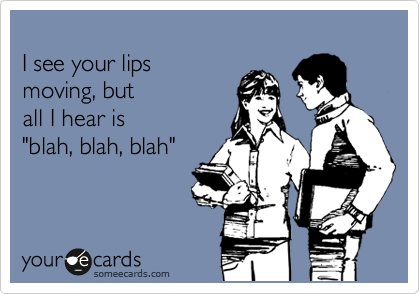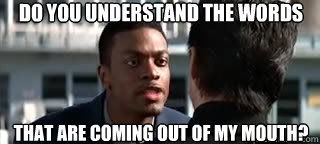
This blog post will cover a small guide to a successful presentation. In my day to day life I’m talking in front of small and bigger groups of people on a weekly basis. I really get a kick out of presenting. I get a lot of energy out of it and I’m sure not everyone is made for public speaking. However when I look back to my time in school I was always completely stressed out when I needed to present. You all know how that goes. Your throat feels strange. You can’t remember your words. You are cutting the chase and you forget half of your story. Yes that was me in school and when I started working I stressed on giving a presentation but I grew by doing it and by applying a couple of tricks.
There are only a few trainings you will benefit from for the rest of your life. I followed one presentation course and it gave me a great framework on how a successful presentation should be given.
Recently I got the opportunity to present at a couple of big events. My definition of big in this case is 50 – 300 people in one presentation. I wanted to share how I prepped for this as I feel these presentation went very well. Hopefully you can use these tips if you need to present something. Let’s get the show on the road!
Storyline
I’m a big believer of storytelling. Not only telling stories to proof a point but also to present something complex in an “easy” way. I believe all of us can tell a story. When we were born our mother and father told us stories before we went to bed. Or maybe you read stories to your kids before they go to bed. I try to tell a story in all my presentations or maybe tell different stories during my presentation.
Before I make a presentation I try to think about the storyline. What do I want to tell and what is for me a good way to tell this. What is the right flow? Which point do I want to make first before I continue my presentation? How should I build my presentations? Do I use pictures or do I use complex diagrams? Do I use complex language or do I try to tell my story as simple as possible? All questions you need to find some answers to before you start.
I try to find a flow that suits me best. Most of the time I start with setting the scene. Getting the audience on the same level of understanding. This is important if you want to take your listeners on a journey through your presentation. First of all I try to brainstorm with “my inner me” to find a storyline that feels logic to me starting with baby steps and getting customers to a higher level. I could use complex diagrams however I will never show them immediately. I will use animations in PowerPoint/Keynote to build up the slide. This avoids distraction and people getting confused with your story. Most of the time I try to let my slides support my story instead of heaving a lot of sentences on the slides. This doesn’t always work but then I will use animations to show the sentences or words when I’m talking about them. So again they support my story and don’t distract.
Also your wording needs to be self explanatory. Use analogy techniques to link something complex to something simple. Use cars, use animals, use homesituation. Most of us will recognise these and will be able to link and understand something complex easier.
A TEDx talk with Simon Sinek inspired me to use a certain storyline framework. This will always be part of my internal brainstorm. I let the good men tell you aboutthis in the YouTube video underneath.
Prepare your presentation
If you have pulled your storyline together and have all your supporting pictures and slides. Prepare your storyline. Try to present it in front of the mirror. Try to make your story better.
This might seem completely stupid but this is actually very valuable. From personal experience I know how you can start stressing if you first walk into a room and you see 40 pairs of eyes looking at you where you only expected 10 or 20. This gets you out of balance and might put you in a stress situation. You might forget a lot of your story and your 15 minutes presention is done in 5 minutes. This can happen I experienced this myself :-).

My recent presentations for a bigger audience I always prepped the days before. I checked my slide deck adapted it slightly to support my story better. I tried to present this for myself multiple times so I know how much time I need and if I need extra content to make the story a little longer or to add some extra talking points. A real life story to support that. I recently presented at NLVMUG and VMware Empower in Lisbon. The days before I practiced my presentation in my hotel room or at home for a couple of hours. I presented myself in my own room “hello my name is… . Today’s subject will be VMware’s Vision and Strategy”. There was nobody in my room, no audience just me walking up and down my room with my computer screen pointed at me in presentation mode. You can start stressing a little during that prep session but you plant the story in your brain. You will always use other words to explain it but you created some hooks for yourself. Is this presentation feeling good to me? Yes, let’s do it!
I know some people like some extra feedback from people the trust. Adding a dry run with a small inner circle you trust might be a good addition to this presenting. You will need to be at your best when on stage. Even in a dry run you need to be at your very best!
Get people on a high!

I don’t mean it literally as Elon was doing when telling his story on a podcast somewhere last year. I mean we should play a little bit with our attention span. As a human being we have only a couple of minutes attention span. In a 60 minutes presentation we tend to only capture parts of the presentation mainly the beginning and the end. So if you talk 10 minutes about yourself that’s not really relevant for the presentation. I always try to chop my presentation in different chapters. These chapters are my attention spans. I want to make a point in each chapter. So they understand why you are doing it and how this solution is solving this. Getting people paying attention to a new chapter makes them understand more then if you just present a story in 60 minutes without making an actual point. So make lot’s of points. Draw attention to certain points and tell people “You will will need this information later on in the presentation”. Create that imaginary hook in the brain. People are tend to remember it longer and understand the relations in your presentation better. Be the guide from one high to the other. In between there might be a low but the two highs need to make sense.
Be a happy puppy

If you get the opportunity to present your energy level should be through the roof. If people are looking at someone with a high energy level they are going to pay more attention. Make jokes! Get people laughing with a joke that might have relevance in your presentation. If people laugh some hormones are freed in the brain and people will be paying a little more attention. You don’t need to be a stand-up comedian but keep it “light” make people smile from time to time. You can do that by telling a joke or by just showing them you enthusiast. Keep your energy level up during the full presentation. Nothing as worse as presenter that starts very well but the energy level sinking during the presentation. If the energy levels tanks your audience attention will tank as well. You want to avoid this at all time!
You need to be the happy puppy in the room!
Stress Stress Stress!

We all had these moments. You start sweating, your throat feels strange, you would like to get under a stone as fast a possible and come out when the coast is clear. That’s what I call stress. It’s hard to get yourself feel at ease at first but when you prep well and you know what you are going to tell. It will feel more natural at a certain moment during the presentation. You will get in the flow of your presentation and you will start to feel better. The first couple of minutes can be a little hard but nothing you can’t do. Just pull yourself together and remember how you did it during the dry run or during the prep in your own isolated environment. Try to look around in the room. Don’t present to 1 person in the audience you will see they are actually listening because you are the smartest guy in the room. Otherwise you would be sitting in the audience and not on stage! Be at your best and try to relax! Energy level up and just start talking!
Enjoy your presentation!

Leave a Reply